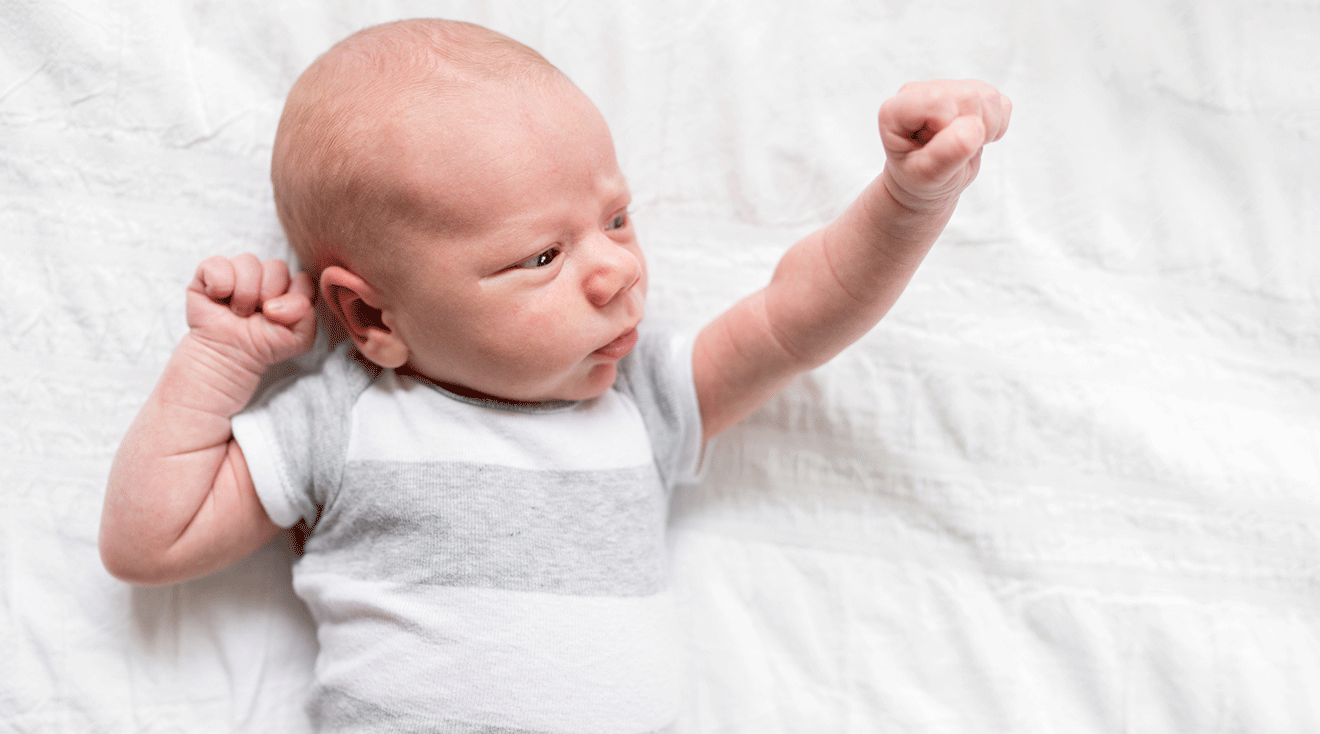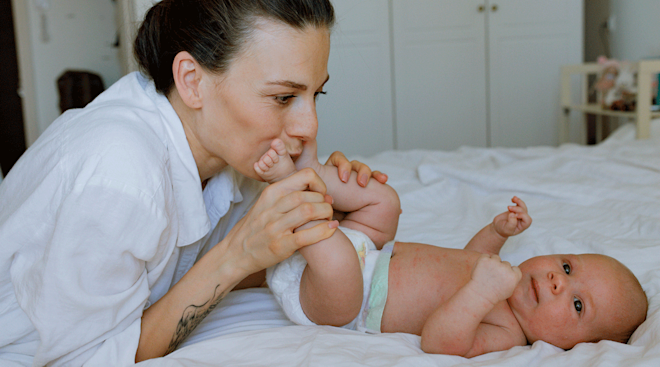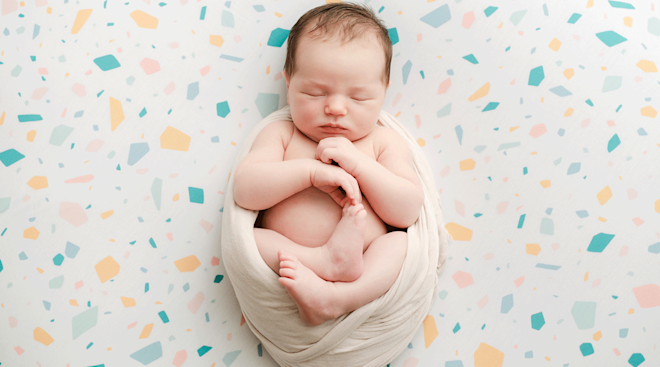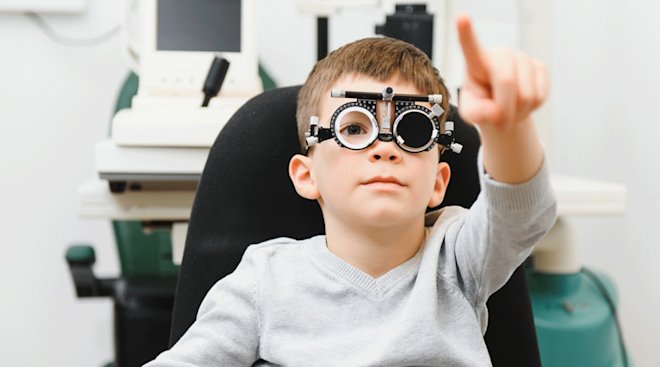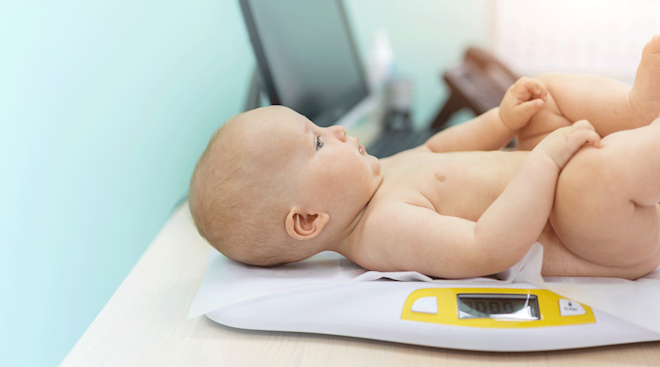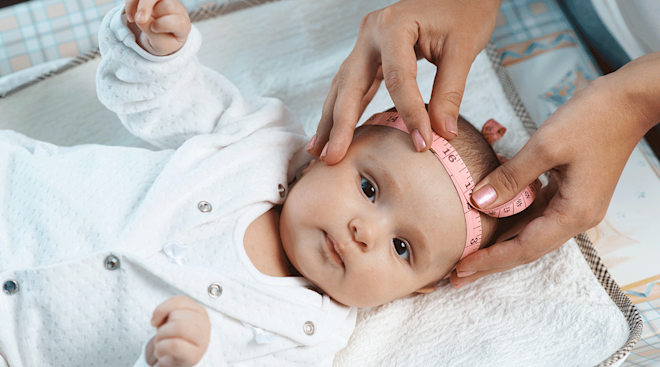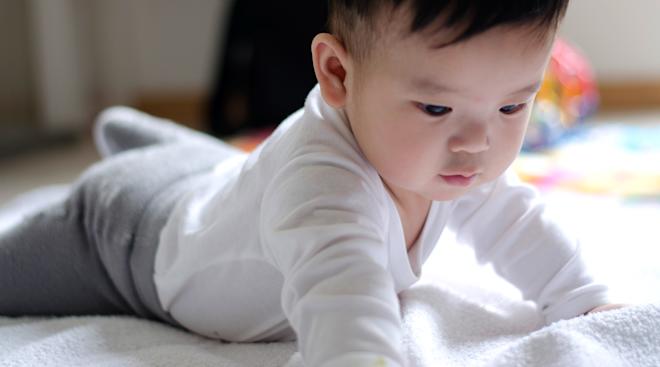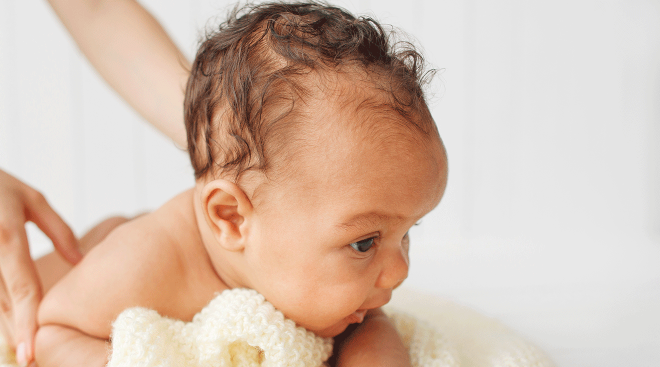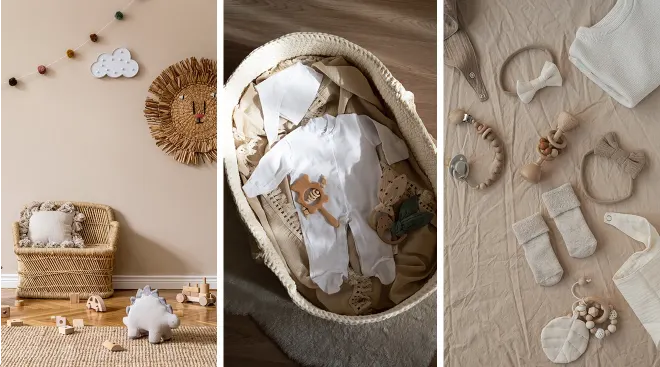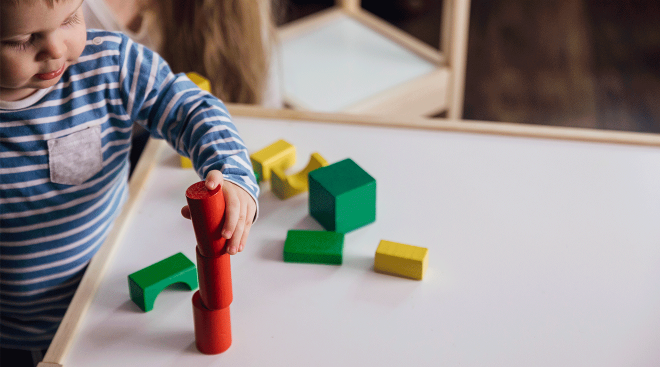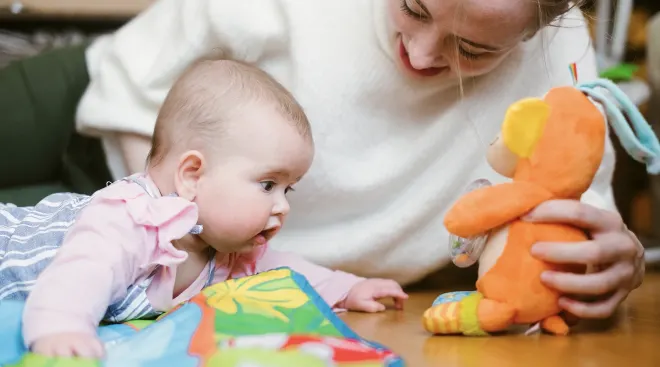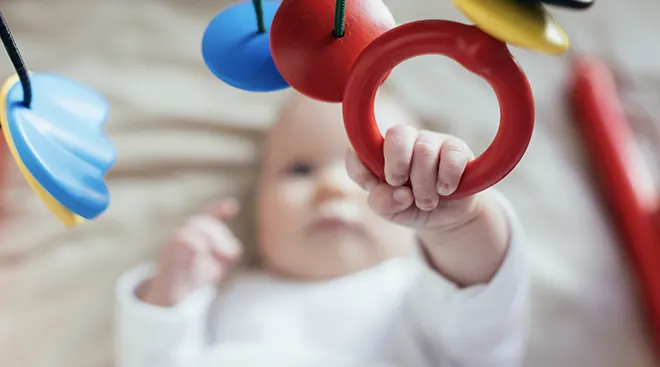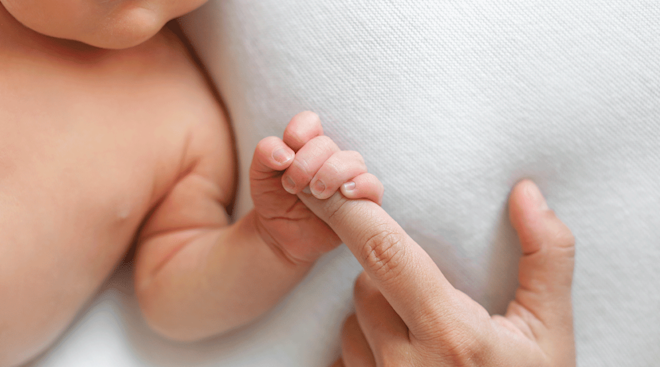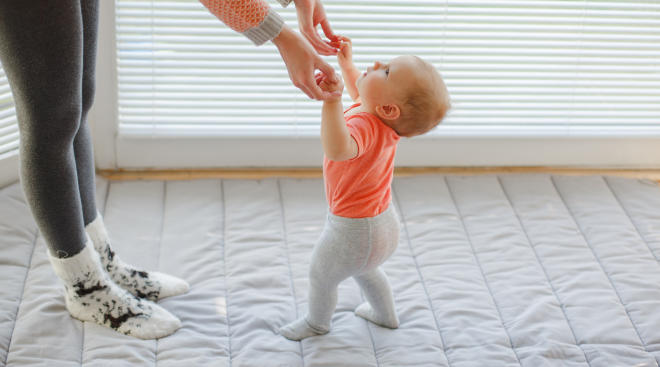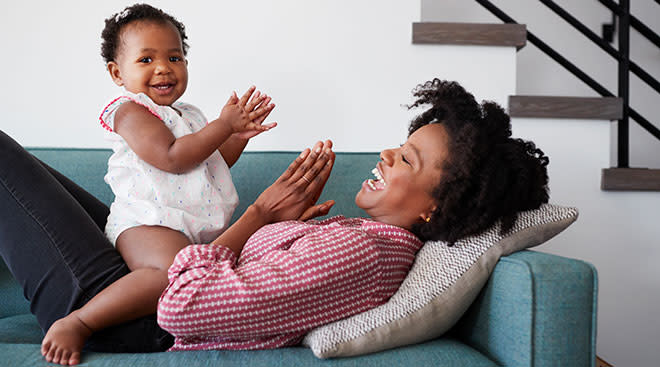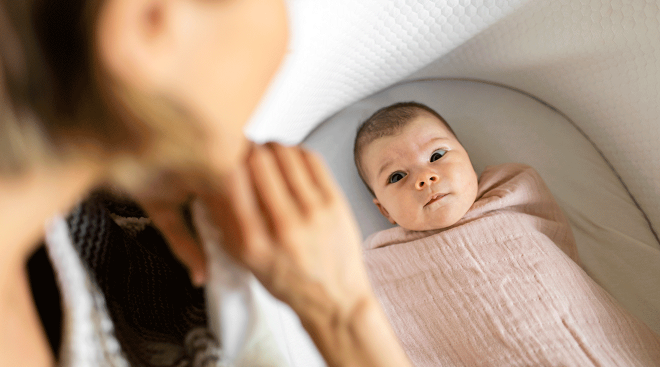What Does Fist Clenching in Babies Mean?
You may have noticed that your newborn has closed, clenched fists. (And, no, they’re not challenging you to baby fisticuffs.) The fact is: fist clenching in babies is completely normal, and it’s typically harmless. Basically, it’s a natural reflex for newborns. So when will those little paws open up? Read on to learn from pediatricians why babies ball their hands into fists—and if there’s anything baby’s clenched fists are trying to tell you.
Fist clenching in babies is a normal neurological reflex, says Denise Scott, MD, an Oklahoma-based pediatrician and author of Feed Your Child’s Future Health: Prevent Disease Before It Starts. The reason it happens is two-fold. For starters, there’s the newborn reflex known as the palmar grasp. This is when a newborn instinctively wraps their hand around something pressing on their palm.
Additionally, fist clenching in infants is also “a continuation of how babies are positioned in the womb,” Scott says. Elizabeth Cilenti, MD, MPH, a pediatrician with Northern Virginia Family Practice, adds that babies are curled up in the womb, with their arms bent and their hands clenched. “Once they come out into the world, these things will slowly fade,” as baby’s nervous system matures, she says.
Due to the fact that fist clenching in babies is an instinctive reflex, they may also do it when they’re overstimulated, stressed, tired, fussy, hungry or otherwise awake.
Both experts say that while you can try to open newborn clenched fists, it’s not necessary. Those fists will open by themselves soon enough. In the meantime, if you do want to try opening baby’s fists, it’s best to try while baby is relaxed by gently stroking their hands. Beyond this, “you don’t need to do any extra exercises to help baby open [their fists],” Clienti says.
That said, there are certain situations in which you may need to gently open baby’s hands. “If you place something in their palm, they will hold on to it and not release it,” Scott explains. If they happen to wrap their hand around their hair (or your hair), they’ll continue to pull and won’t know how to release it. You’ll need to help them out!
Babies naturally unclench their fists a few months after birth. However, like so many other things, there’s no definitive timeline. Amina Ahmed, MD, a pediatrician at Stanford Medicine Children’s Health, says it can happen as early as one month old, while Cilenti says it may happen as late as the six-month mark. On average, though, experts say most babies start to unclench their fists around 3 to 4 months of age. This is when they lose the palmar reflex and their nervous system begins maturing. This is also around the time babies try grasping and swatting at objects. “This is a good time to start playing with them and encouraging them to open their fists and grasp a rattle or toy,” advises Ahmed.
Again, fist clenching in babies is entirely normal. But if it doesn’t go away by 6 months, it’s a good idea to reach out to your pediatrician, says Ahmed. According to Stanford Medicine, continued fist clenching in older babies and toddlers may be a sign of poor motor function and/or cerebral palsy.
On the other hand, if your newborn keeps their hands mostly unclenched and doesn’t appear to have the palmar reflex, it’s also a good idea to check in with their doctor, as this could point to a neurological problem, Cilenti says.
Rest assured, though, that baby’s pediatrician will examine them and test their neurological reflexes at each checkup. “If there is abnormal persistence of reflexes or clenching of fists, your pediatrician will address this,” Ahmed says.
Frequently Asked Questions
Why do babies clench their fists when feeding?
If baby is clenching their fists while feeding, it’s part of their instinctive reflex. As mentioned, babies may clench their fists as a sign of hunger or when they’re starting a feed. Moreover, some babies may temporarily unclench and relax their hands once they’re fully sated, says Jessica Madden, MD, IBCLC, a board-certified pediatrician and medical director of Aeroflow Breastpumps.
If baby has clenched fists, does that mean they’re hungry?
While fist clenching in babies is instinctual and may be a sign of hunger, it’s not a guarantee. Rather than focusing on clenched fists as a sign of hunger, look for more reliable cues, Ahmed says, such as baby smacking their lips or rooting.
Why do babies clench their fists while sleeping?
“For the initial few months, babies will keep a clenched fist most of the time, just as they did in the womb,” Scott says. However, Cilenti adds this is variable, as some babies may be more relaxed in their sleep and unclench their fists.
Does fist clenching in babies mean they’re tired?
“As babies become more overt, tired or fussy, their nervous systems become more reactive, and you may see more of the newborn reflexes such as the Moro reflex, the palmar grasp reflex, fist clenching or the tonic neck reflex,” Cilenti says. However, fist clenching in babies also might not mean anything at all. It simply may be instinctual.
Is it normal for some babies not to clench their fists at all?
While there’s a spectrum of what’s considered normal for clenched fists in babies, most infants will have some sort of palmar grasp reflex until around 6 months old, Cilenti says. If baby isn’t clenching their fists at all, it could be a sign of a neurologic issue. “Typically, it’s not normal for hands to be open all the time” in newborns, Scott adds.
Does fist clenching in babies have anything to do with clenched fist syndrome?
According to the experts, clenched fist syndrome is usually seen in older kids and adults; it’s different from the normal fist clenching seen in newborns. “The syndrome occurs in older individuals and is associated with a psychiatric illness or following trauma,” Scott explains.
For now, it might look like your newborn’s fists are ready for action (“put ’em up!”). But as they grow, they’ll start to unclench those cute hands, while rapidly gaining exciting new motor skills.
Please note: The Bump and the materials and information it contains are not intended to, and do not constitute, medical or other health advice or diagnosis and should not be used as such. You should always consult with a qualified physician or health professional about your specific circumstances.
Plus, more from The Bump:
Amina Ahmed, MD, is a pediatrician with Stanford Medicine Children’s Health. She earned her medical degree from Allama Iqbal Medical College in Lahore, Pakistan and completed her residency at the Newark Beth Israel Medical Center in Newark, New Jersey.
Elizabeth Cilenti, MD, MPH, is a pediatrician with Northern Virginia Family Practice. She completed her medical degree and residency at Indiana University School of Medicine and her master’s degree in public health at the Harvard T.H. Chan School of Public Health.
Jessica Madden, MD, IBCLC, is a board-certified pediatrician, lactation consultant and neonatologist at Rainbow Babies and Children’s Hospital in Cleveland, Ohio. She also currently serves as the medical director of Aeroflow Breastpumps, as well as the founder of Primrose Newborn Care. Previously, she has served as the clinical instructor of pediatrics at Harvard Medical School. She received her bachelor’s degree from the University of Notre Dame and her medical degree from Ohio State University. She completed her residency in pediatrics at the University of Massachusetts.
Denise Scott, MD, is a pediatrician and a pediatric endocrinologist based in Oklahoma with over 30 years of experience. Certified in culinary medicine, Scott also runs the blog Feed Future Health and is the author of Feed Your Child's Future Health: Prevent Disease Before it Starts. She received her medical degree from the University of Texas Medical Branch and completed her residency at the University of Oklahoma Health Sciences Center with a fellowship at the National Institutes of Health.
Stanford Medicine Children’s Health, Cerebral Palsy in Children
Learn how we ensure the accuracy of our content through our editorial and medical review process.
Navigate forward to interact with the calendar and select a date. Press the question mark key to get the keyboard shortcuts for changing dates.

































